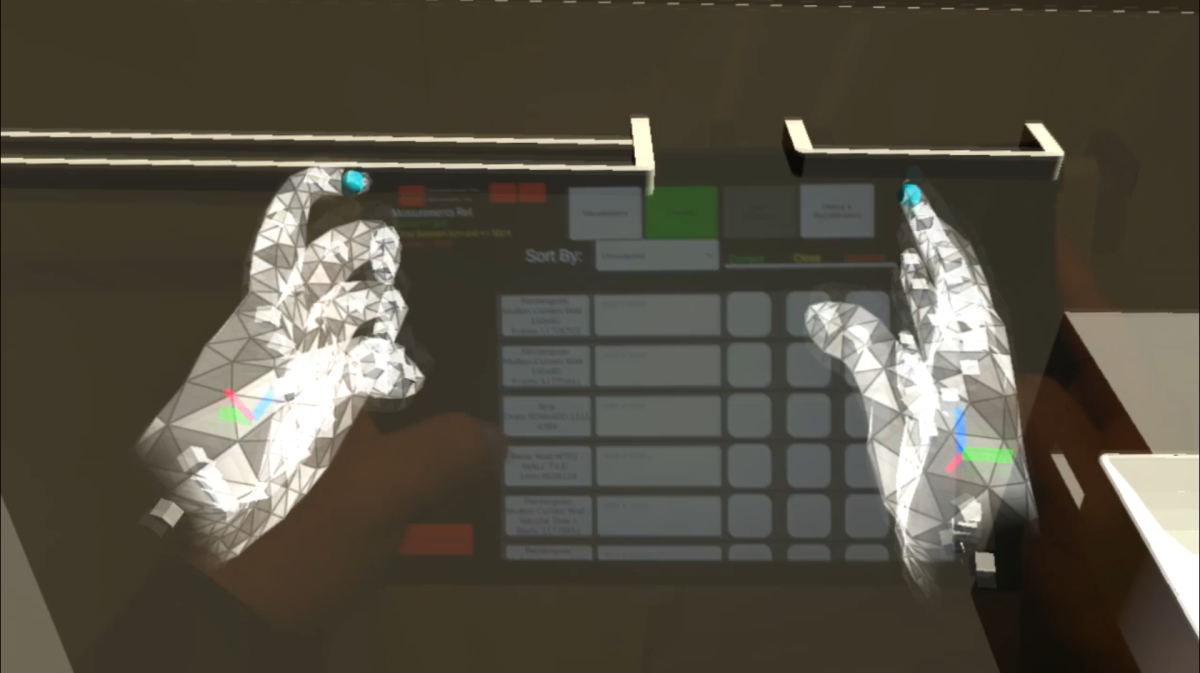We are bridging the gap between design and outcome in building construction with a bold new approach to detecting defects.
Building construction is a rapidly evolving industry, but the methodology for defect inspection remains largely unchanged. A reliance on 2D design drawings can often leave workers grappling with a disconnect between the onsite reality of construction and the original design intentions. Without an effective way to bridge this gap, defects can be missed or mishandled – sometimes at the cost of building quality and safety.
The Australian Research Centre for Interactive and Virtual Environments (IVE) at the University of South Australia is uniquely placed to tackle this problem, with our interdisciplinary research expertise spanning computer science, engineering, neuroscience, art, architecture, and design.
In collaboration with Sarah Constructions, we have developed a cutting-edge system that uses Augmented Reality (AR) to transform designs into 3D virtual objects that can be viewed within real-world construction environments – making defect detection much more reliable.

THE TRADITIONAL METHOD OF IDENTIFYING BUILDING DEFECTS
Sound defect management is essential in the creation of high-quality built environments. Currently, defect management is time-consuming, laborious, expensive, and prone to human error. The process typically involves workers inspecting a site, discovering defects, recording the information manually, copying the information into a digital database, and – finally – communicating the information to designers and builders for resolution.
Although some automation has been introduced through the use of mobile devices for recording information digitally on-site, the capacity to visualise the original design remains limited. Resultantly, defects can be overlooked and instructions on how to rectify them can be unclear, ultimately putting the building quality at risk and potentially compromising the eventual experience of inhabitants.
MORE THAN REALITY: BRINGING DESIGN TO THE CONSTRUCTION SITE
AR is an immersive technology that adds virtual data to the user's real-world perception. It is interactive and combines real and virtual objects into a single view.
To address the problem of building defect management, IVE developed an innovative AR system. It uses advanced camera and sensor technologies to allow digital models and other building information from the original design to be overlaid onto the real-world construction site in real-time.
This development provides to-scale visual cues from the original design, as well as additional AR functions, to allow for efficient and effective defect detection and management.
IMPACT
Developed through a co-design process with Sarah Constructions, the system has an immediate impact on the construction sector. The prototyping was done in close collaboration with the end users at Sarah Constructions, with focus groups and iterative designs ensuring that the system addresses genuine problems and provides solutions in a practical, user-friendly way.
As well as the immediate beneficiaries in the building and construction industry, this technology will also have a long-term influence on built environments and their inhabitants. More effective identification, management, and resolution of construction defects ultimately result in a safer, more functional, and more enjoyable constructed world.
"Researchers from the Australian Research Centre for Interactive and Virtual Environments (IVE) at the University of South Australia are collaborating with Sarah Constructions to develop an automated system to more accurately and easily detect building defects using Augmented Reality (AR). Seeing the motivated and driven approach from the IVE team has been fantastic, and we believe they are in a prime position to develop a system that disrupts the traditional workflow of defect management. We look forward to continuing the shared passion for making a difference in the industry."
Alex Willshire
Digital Manager
Sarah Constructions

For more information or to discuss potential projects contact: Ning.Gu@unisa.edu.au


